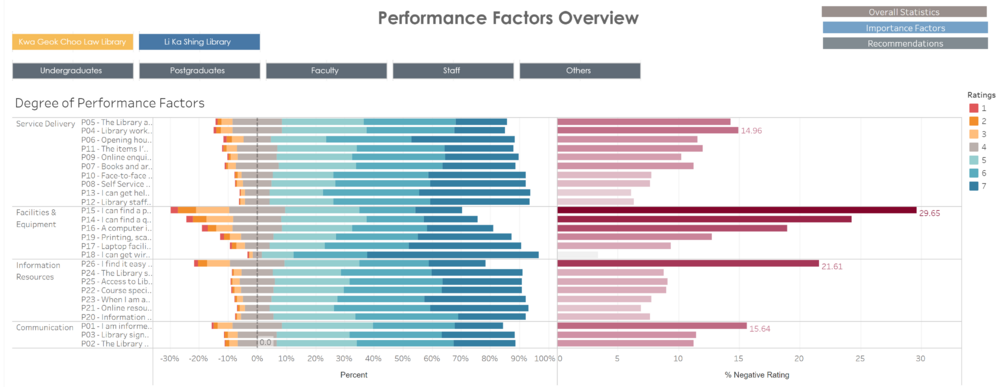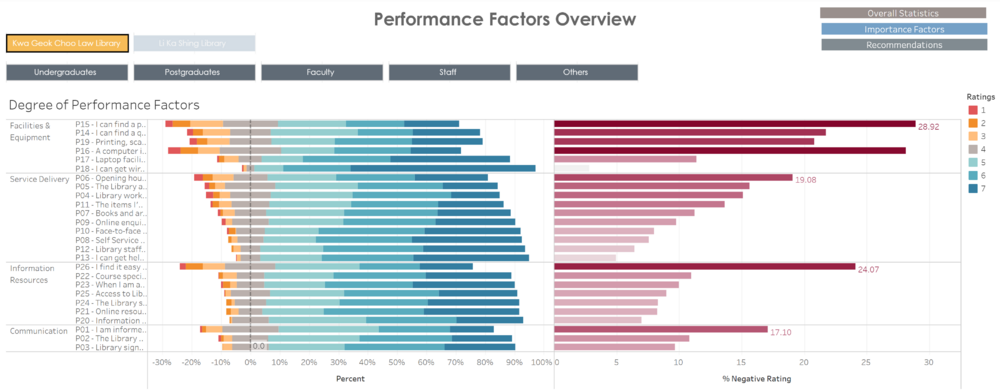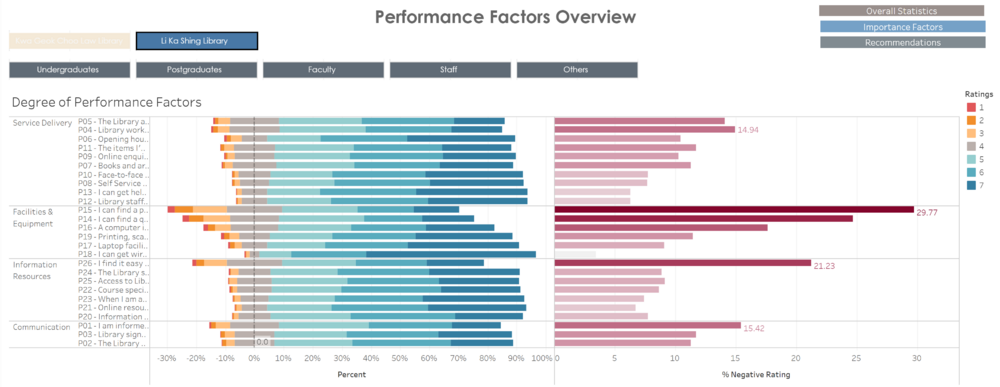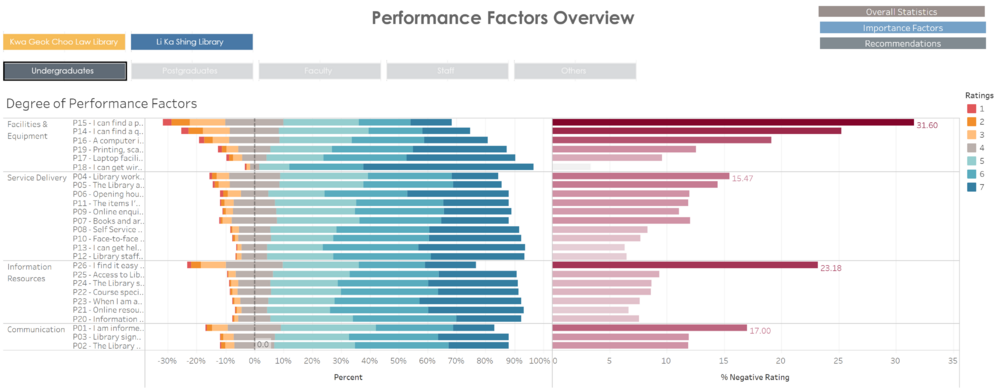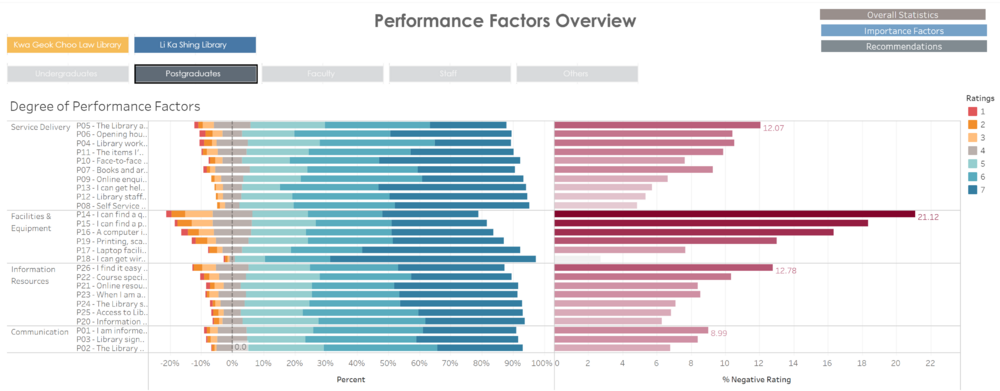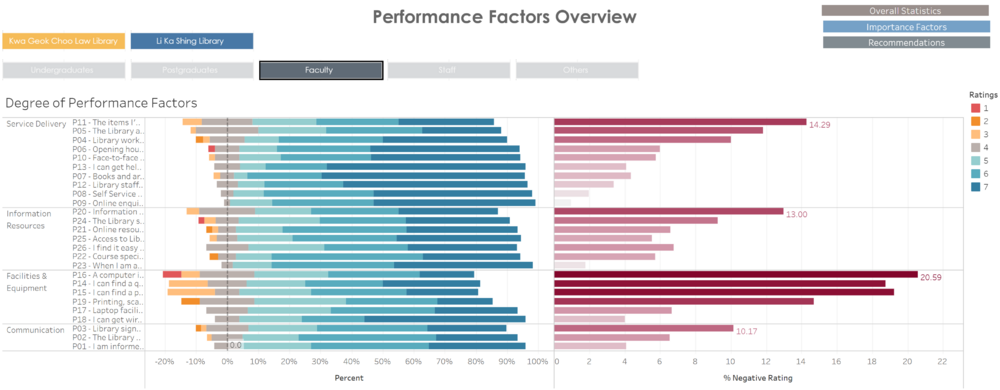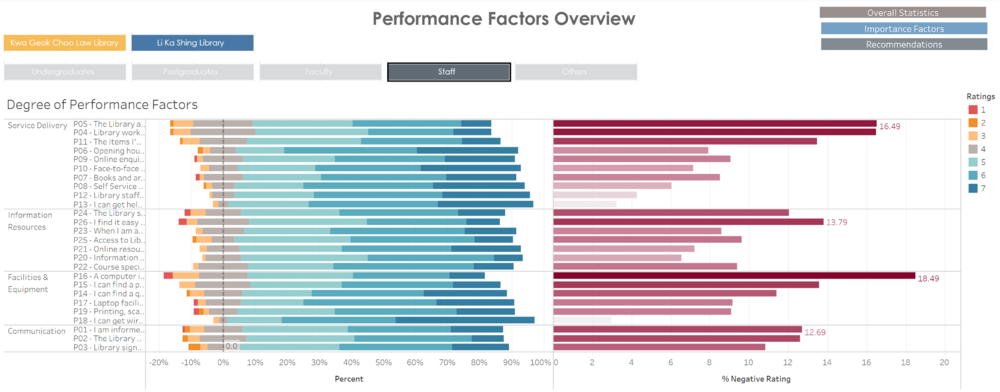IS428 AY2019-20T2 Assign LIM PAO LING RACHEL PerformanceFactors
SMU Library Dashboards
A diverging chart is used to depict the likert scale type of data that deals with the rating of the how important the factor is to the respondents. The 4 main factors groups pertain to the Information Resources provided by the library, the Communication between the library and respondents, the Facilities & Equipment provided by the library and the service delivery of the library. The ratings range from 1 to 7 with 1 being the least important and 7 being most important. In addition to the respondent group filter buttons, a library type filter button is added to provide a personalised view between KGC library and LKS library scaled ratings.
For each respondent group observation, the order of categorised performance factors will be explained based on the diverging chart and each performance factor category, each sub-factor that has the greatest negative count would be selected for analysis. The red bars represent the percentage proportion of negative ratings, in this case the higher the percentage of negative ratings, the poorer the performance of the factor.
| Observations |
|---|
|
Performance Factors - KGC Library
|
|
Performance Factors - LKS Library
|
|
Performance Factors - Undergraduates
|
|
Performance Factors - Postgraduates
|
|
Performance Factors - Faculty
|
|
Performance Factors - Staff
|
| Insights |
Insights Summary
Performance Insights
For all 4 groups of respondents, the factor that most underperformed was the facilities and equipment management of the library, specifically about being able to find a space within the library for group work whenever necessary. This could imply that there might be a lack of space within the SMU libraries, and for further surveys conducted, questions asking the time and duration of visit to the library could be helpful in analysing the visitation volumes throughout the day. Perhaps the library could look into creating more spaces for group work environments.
Undergraduates | Postgraduates
The next performance factor that garnered more poor ratings was the information resources provided by the library, specifically, the usability of suing mobile / smart devices to access online resources. It could imply that the online resource interface might not be compatible to all types of devices hence, in order to further investigate, future library surveys could explore questions that pertain to reasons that the online resources are not easily accessible via mobile/smart devices.
Faculty | Staff
The next performance factor that received more poor ratings were the service deliveries by SMU libraries, specifically, the library workshops, classes and tutorials which could aid in learning and researching needs. This could imply that these group of respondents look out for materials that can help in teaching or mentoring capabilities for SMU students. For further investigation, future surveys could include questions as to the type of workshops / classes that such respondent look out for, so that the SMU libraries can improve their performance in this aspect.
Better Performing Factors
In the order of best performing to least best performing:
- Service delivery ➪ Ability to get help from library staff whenever need.
- Communication ➪ The library website providing useful information.
- Information Resources ➪ Online resources (e.g. articles, databases, ebooks) being useful for studies and provide aid with learning and research instances.
- Facilities & Equipment ➪ The availability of getting wireless access while at the library.
In line with the important factors previously analysed, it is possible to see that the factors that were mostly important with the respondents were well managed by the SMU libraries, since the negative ratings proportion was generally lower.
